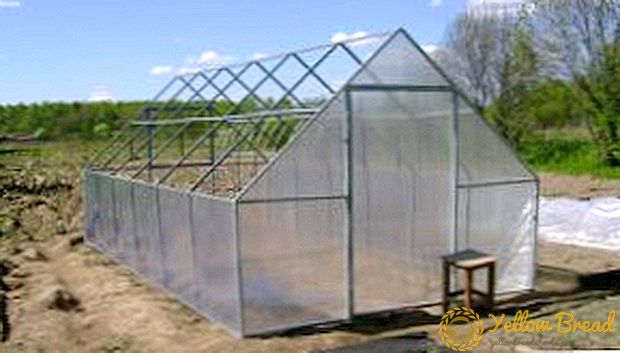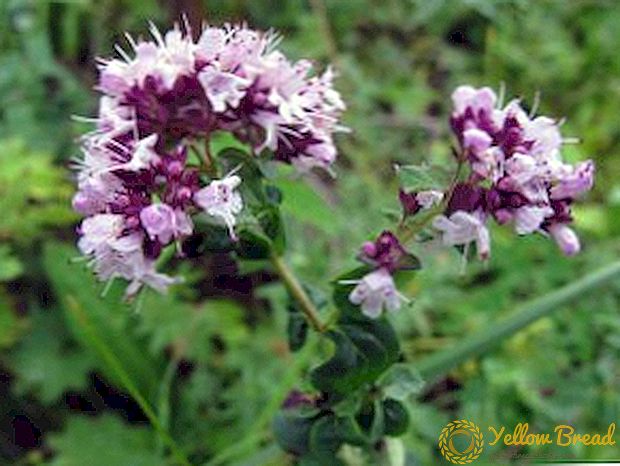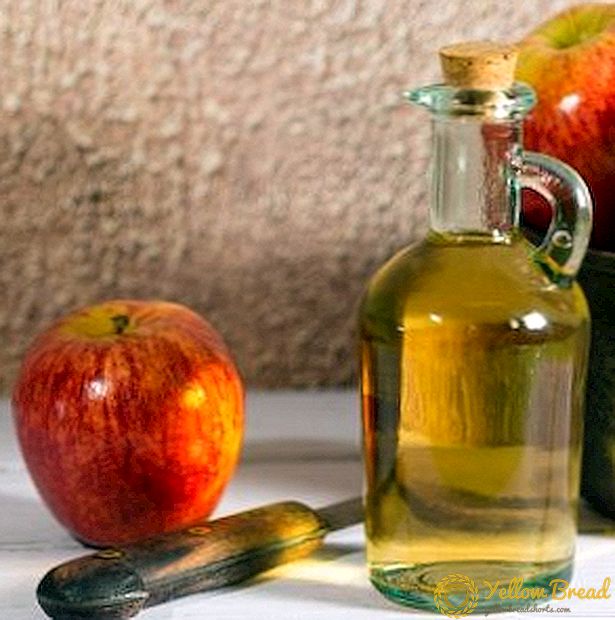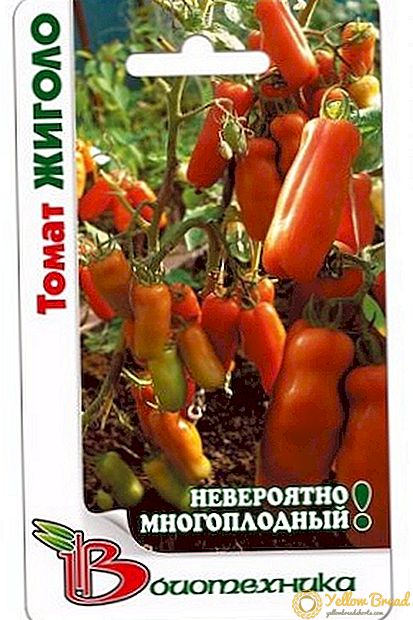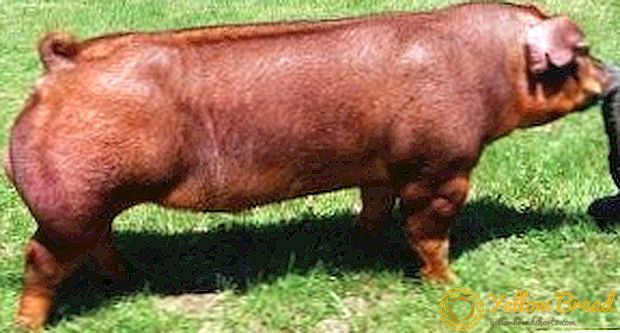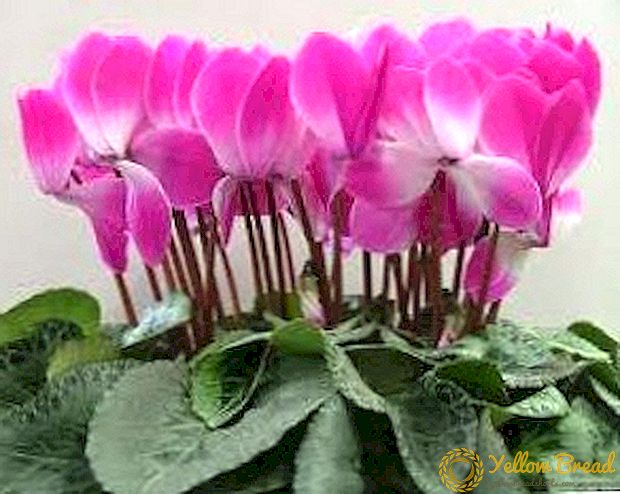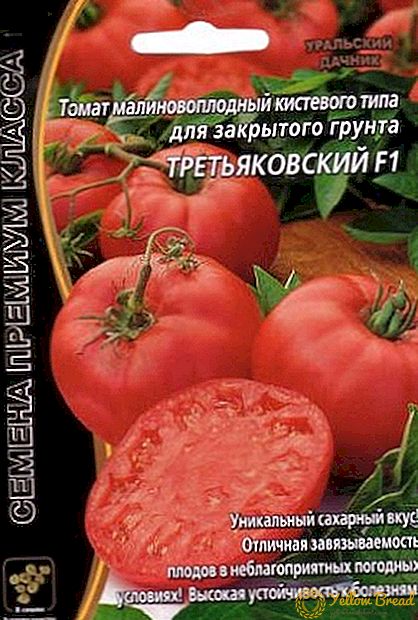 Raspberry fruits of the tomato variety "Tretyakovsky f1" from the seed producer "Ural summer resident" compete adequately among other hybrids that have appeared.
Raspberry fruits of the tomato variety "Tretyakovsky f1" from the seed producer "Ural summer resident" compete adequately among other hybrids that have appeared.
In the reviews, vegetable growers note the pleasant taste and appearance of tomatoes, as well as their high yield.
Let us examine in more detail in the features of the description and cultivation of this species of nightshade.
- Tomato "Tretyakovsky": varietal characteristics
- Inference history
- Description of the bush
- Fruit Description
- Yield
- Resistance to pests and diseases
- Using
- Pros and cons varieties
- Agrotechnics and features of growing and care
Tomato "Tretyakovsky": varietal characteristics
The medium-early tomatoes of the Tretyakovsky variety are represented on the seed market as a tall hybrid labeled F1, which indicates the presence of strong maternal characteristics of the plant.We will dwell on the main ones in more detail, but first, let's delve into the history.
Inference history
"Tretyakov" tomato was bred by Russian breeders in 1999 by artificial pollination of flowers of one varietal plant. A year later, the hybrid was registered in the State Register as a variety of tomatoes for cultivation in the open field and greenhouses. 
Description of the bush
Externally, the hybrid is a high compact shrub with unlimited growth of shoots. By virtue of intensive biomass buildup, it requires intervention through the pinching and tying up to the supports.
Most often, experts recommend forming a crown of 2-3 stems. Sprouts are powerful, well leafy. Inflorescences are formed at intervals of three leaf plates. Lateral processes, which are located closer to the racemes, continue the main axis of development of the stem. The ovary is formed by clusters consisting of 7-9 fruits.
The shrub adapts well in the shade and is characterized by a high percentage of ovary formation, regardless of weather conditions. In terms of ripening, the hybrid is classified as a medium early variety.
Fruit Description
Tomatoes "Tretyakov" ripen within 100-110 days after sowing the seeds and according to the description are characterized by excellent taste and commodity qualities. The main signs of these fruits are a rounded, slightly flattened shape, rich crimson color, fleshy juicy flesh, thin, but elastic skin. Ripe tomatoes of medium size with a weight of about 100-130 g each. There is a high keeping quality and transportability of vegetables. Even under adverse weather conditions, they do not crack.
The main signs of these fruits are a rounded, slightly flattened shape, rich crimson color, fleshy juicy flesh, thin, but elastic skin. Ripe tomatoes of medium size with a weight of about 100-130 g each. There is a high keeping quality and transportability of vegetables. Even under adverse weather conditions, they do not crack.
Yield
Perhaps abundant fruiting is the main reason for the popularity of this hybrid. Tomatoes "Tretyakovsky" are characterized by a record yield, which, with competent agrotechnology of culture, amounts to 5-6 kg of fruits from each bush. That is, to provide the family with early tomatoes and roll up the preservation for the winter, 5-8 plants are enough.
Resistance to pests and diseases
Growing tomatoes "Tretyakovsky f1" greatly facilitates the vaccinated maternal gene for resistance to viral diseases and pests. The plant compares favorably with other varieties by immunity to the causative agents of fusarium, cladosporia and tobacco mosaic. Therefore, subject to regular wetting and fertilizer, the culture will thank for its abundant fruiting.  Attacking Colorado beetles are annoying the tomatoes, to which they have not yet been able to resist any solanaceous. To save the crop from these harmful insects is recommended by the preparations "Prestige", "Maxim" and mechanical destruction. From whitefish, moth and sawflies effective "Lepedotsid", "Bi-58 New", "Aktara".
Attacking Colorado beetles are annoying the tomatoes, to which they have not yet been able to resist any solanaceous. To save the crop from these harmful insects is recommended by the preparations "Prestige", "Maxim" and mechanical destruction. From whitefish, moth and sawflies effective "Lepedotsid", "Bi-58 New", "Aktara".
Using
Elastic skin allows tomatoes of this variety to be stored for a long time for consumption in raw form. They make very tasty salads, but the hostesses note the suitability of the fruit and heat treatment. They are recommended for the preparation of various sauces, pasta, dressings, juice and homemade whole canned food.In the bank "Tretyakov" tomato also looks very picturesque, and most importantly - does not crack and is pleasant to the taste.
Pros and cons varieties
On the hybrid "Tretyakov f1" you can hear both good and bad responses. Among the positive aspects of the culture gardeners say:
Among the positive aspects of the culture gardeners say:
- high yield;
- early ripening of tomatoes;
- resistance to bacterial, viral and fungal pathogens;
- high quality characteristics of the fruit, their versatility in use;
- fruiting regardless of weather conditions, which lasts until October.
On the imperfection of the variety indicate the statements of vegetable growers about too tall, but fragile stems. If in time they are not attached to the pegs, you can stay without any tomatoes. Moreover, such 2-meter giants often cast a shadow over neighboring cultures, which creates problems in small areas.The disadvantages include the presence of many fakes, which complicates the search for high-quality seeds, and the special requirements of the variety for wetting, feeding.
Agrotechnics and features of growing and care
Tomato "Tretyakovsky f1" is recommended for planting in open soil and in greenhouses. Under cultivation under the conditions of the latter, a maximum return of the hybrid is observed. Sprouting seeds occurs seedling way.
Pre-seed should be soaked in a solution of growth stimulant at least half an hour before planting. Grain treatment with any fungicide is desirable. Experienced gardeners advise the biological drug "Ecosil", which successfully combines both functions.
If cultivation occurs with the use of an earthy mixture of fertile balls of earth, peat and compost, it must be roasted in the oven without fail.
Tomatoes "Tretyakovsky" require proper farming practices, regarding irrigation and fertilizer. Professionals strongly advise not to overdo it with moisture. Hybrids in the early stages of development water is needed no more than once a week. When five or more leaves appear on the stems, irrigation should be increased to two times. Do not forget about the water temperature for irrigation. It should not be colder than 20-22 ° С and be surely well settled. Excess moisture in the soil will affect the quality of the tomatoes - they will be sour and very soft.
For a full growing season, tomatoes need to ensure the supply of nitrogen, phosphorus and potassium. Young stalks react very painfully to the lack of these components, therefore, immediately after planting, it is desirable to add fertilizer from superphosphate. If you overdo it with nitrogen-containing substances, the bush will begin to fatten, and in the future it will accumulate nitrates in tomatoes.
Based on these features of the culture, watch its development, with a strong increase in biomass, you should stop moisturizing and live the roots of phosphorus fertilizers.During flowering, ash is important for fruiting, disease prevention and harmful insects.
Consider the features of substrates. Sour will not suit tomatoes. Therefore, in this case it is better to neutralize them with lime. If the planned bed turned out to be wet and loamy, be sure to add organic matter and drainage (sand, peat, sawdust). Of course, it will be better for the plant if you carry out these activities in the fall when plowing the plot.
Flowering shoots agronomists advise shaking for good pollination.

